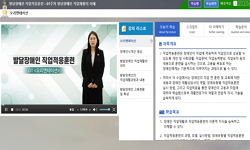연구목적: 본 연구의 목적은 국내・외 개별화전환계획(ITP) 양식의 구조를 분석하고, 국내 특수교육 현장에 적합한 ITP 양식의 구성요소를 도출하여 제안하는 것이다. 연구방법: 국내・외 ITP ...
http://chineseinput.net/에서 pinyin(병음)방식으로 중국어를 변환할 수 있습니다.
변환된 중국어를 복사하여 사용하시면 됩니다.
- 中文 을 입력하시려면 zhongwen을 입력하시고 space를누르시면됩니다.
- 北京 을 입력하시려면 beijing을 입력하시고 space를 누르시면 됩니다.

국내・외 개별화전환계획(ITP) 양식의 구조와 구성요소:분석 및 제안 = Structures and Components of Individualized Transition Plan(ITP) Forms in Korea and Abroad: Analyses and Suggestions
한글로보기https://www.riss.kr/link?id=A109737689
- 저자
- 발행기관
- 학술지명
- 권호사항
-
발행연도
2025
-
작성언어
Korean
- 주제어
-
등재정보
KCI등재
-
자료형태
학술저널
-
수록면
55-85(31쪽)
- 제공처
-
0
상세조회 -
0
다운로드
부가정보
국문 초록 (Abstract)
연구목적: 본 연구의 목적은 국내・외 개별화전환계획(ITP) 양식의 구조를 분석하고, 국내 특수교육 현장에 적합한 ITP 양식의 구성요소를 도출하여 제안하는 것이다. 연구방법: 국내・외 ITP 양식과 관련 선행문헌을 수집하여 그 구조 및 특징을 분석하였다. 도출된 ITP 양식 구성요소의 내용타당도를 전문가집단 13명 대상으로 점검하였다. 연구결과: 첫째, 전환계획 문서명은 ‘개별화전환계획(ITP)’이 가장 빈번했고, ITP 수립 절차는 7단계, ITP 양식의 구성요소는 8개로 유형화할 수 있었다. 둘째, 선행문헌에 기초한 ITP 양식은 ‘측정가능한 전환목표 설정’, ‘전환서비스 포함’, ‘학업과정 포함’ 지표에서 높은 충족 비율을 나타냈다. 셋째, 본 연구에서 제안하는 최종 ITP 양식의 구성요소는 총 8가지로: (1) ITP 회의 정보, (2) 학생 기본정보, (3) 전환요구, (4) 전환평가, (5) 현재 수행수준, (6) 전환목표, (7) 전환서비스, (8) 전환목표 관련 IEP 목표이다. 결론: 본 연구는 ITP 모델 및 시스템 개발에 앞서 국내 특수교육 현장 적합성을 지닌 ITP 양식의 구성요소를 도출하였다. 이러한 성과는 향후 한국형 ITP의 수립 및 운영을 위한 기초자료로 활용될 수 있고, 궁극적으로는 국내 특수학교 및 특수학급에 재학 중인 장애학생의 전환교육 활성화와 내실화, 나아가 특수교육의 질적 향상과 성공적인 성인기 전환에 기여할 수 있다.
다국어 초록 (Multilingual Abstract)
Purpose: To analyze the structure of domestic and international Individualized Transition Plan (ITP) forms and suggest ITP components suitable for special education sites in Korea. Method: Relevant literature related to ITP forms were collected. Struc...
Purpose: To analyze the structure of domestic and international Individualized Transition Plan (ITP) forms and suggest ITP components suitable for special education sites in Korea. Method: Relevant literature related to ITP forms were collected. Structures and characteristics of ITP forms were analyzed. Content validity of identified ITP components was evaluated by a panel of 13 experts. Results: First, the most commonly used title for the transition plan document was Individualized Transition Plan (ITP) and the ITP process was summarized into seven steps, with ITP forms having eight components. Second, ITP forms showed high satisfaction for indicators of ‘inclusion of transition education curriculum’, ‘student participation’, and ‘interagency participation’. Third, the final ITP form proposed in this study consisted of the following eight components: (1) ITP meeting information, (2) student’s basic information, (3) transition assessment, (4) transition needs, (5) current level of performance, (6) transition goals, (7) transition services, and (8) IEP goals related to transition goals. Conclusions: This study identified components of an ITP form suitable for domestic special education field prior to the development of an ITP system. These results can serve as foundational resources for the establishment and implementation of a Korean ITP. Ultimately, this can contribute to the enhancement of transition education and support the quality of secondary special education and a successful transition to adulthood of students with disabilities.
동일학술지(권/호) 다른 논문
-
자폐성장애 학생을 위한 쓰기 중재 관련 국내외 단일대상연구 동향 및 CEC 질적지표에 의한 분석
- 이화여자대학교 특수교육연구소
- 최미진
- 2025
- KCI등재
-
특수학교장의 리더십이 특수학교의 조직문화와 특수교사의 교직헌신에 미치는 영향: 특수학교 조직문화의 매개효과를 중심으로
- 이화여자대학교 특수교육연구소
- 김지성
- 2025
- KCI등재
-
- 이화여자대학교 특수교육연구소
- 정혜림
- 2025
- KCI등재
-
백워드 설계 문헌 분석: 특수교육 대상 학생 교수・학습에 대한 시사점을 중심으로
- 이화여자대학교 특수교육연구소
- 서효정
- 2025
- KCI등재




 RISS
RISS DBpia
DBpia





